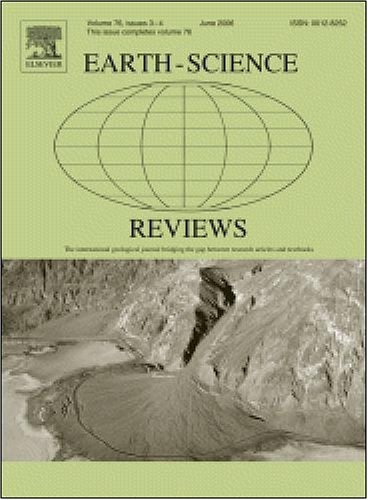Unfolding the differences in two types of ENSO indices with various definitions: A systematic carding with the same criteria
IF 10.8
1区 地球科学
Q1 GEOSCIENCES, MULTIDISCIPLINARY
引用次数: 0
Abstract
El Niño-Southern Oscillation (ENSO) exhibits a wide range of spatial patterns, causing distinct global impacts. Over the past decades, various ENSO indices have been proposed to capture its diversity. Although the classification systems for ENSO flavors differ by definition methodology, it has generally been categorized into two distinct eastern Pacific (EP) and central Pacific (CP) types. However, how different indices characterize these ENSO flavors remains unclear. Here, we reveal the significant differences among these ENSO indices in terms of locally explained variance, type, frequency, and the phase. Specifically, some ENSO indices capture more signals in the equatorial EP or CP, but some others explain relatively insufficient local explanatory variance in the tropical EP and CP, respectively. Moreover, different definition methodologies can result in varying ENSO frequencies identified, even under the same identification criteria and classification process. The most notable discrepancies are observed among CP El Niño and EP La Niña flavors. Furthermore, we discuss the macro-regulation of the Pacific Decadal Oscillation phase on the frequency of each ENSO flavor with different definition. Our findings indicate that each index processes unique characteristics, yet none can comprehensively describe all aspects of ENSO complexity. This highlights the need to consider multiple indices for a comprehensive understanding of ENSO.
两种不同定义的ENSO指数的差异:用相同的标准进行系统梳理
厄尔尼诺-南方涛动(ENSO)表现出多种空间模式,对全球造成不同的影响。过去几十年来,人们提出了各种厄尔尼诺/南方涛动指数来反映其多样性。虽然厄尔尼诺/南方涛动的分类系统因定义方法不同而各异,但一般都将其分为两种不同的东太平洋(EP)和中太平洋(CP)类型。然而,不同指数如何描述这些厄尔尼诺/南方涛动的特征仍不清楚。在这里,我们揭示了这些厄尔尼诺/南方涛动指数在局部解释方差、类型、频率和相位方面的显著差异。具体来说,一些厄尔尼诺/南方涛动指数能捕捉到更多的赤道 EP 或 CP 信号,但另一些指数对热带 EP 和 CP 的局部解释方差相对不足。此外,即使在相同的识别标准和分类过程下,不同的定义方法也会导致识别出的 ENSO 频率不同。最明显的差异出现在 CP 厄尔尼诺和 EP 拉尼娜之间。此外,我们还讨论了太平洋十年涛动阶段对不同定义的 ENSO 频率的宏观调控。我们的研究结果表明,每种指数都处理独特的特征,但都不能全面描述厄尔尼诺/南方涛动复杂性的所有方面。这凸显了考虑多种指数以全面了解厄尔尼诺/南方涛动的必要性。
本文章由计算机程序翻译,如有差异,请以英文原文为准。
求助全文
约1分钟内获得全文
求助全文
来源期刊

Earth-Science Reviews
地学-地球科学综合
CiteScore
21.70
自引率
5.80%
发文量
294
审稿时长
15.1 weeks
期刊介绍:
Covering a much wider field than the usual specialist journals, Earth Science Reviews publishes review articles dealing with all aspects of Earth Sciences, and is an important vehicle for allowing readers to see their particular interest related to the Earth Sciences as a whole.
 求助内容:
求助内容: 应助结果提醒方式:
应助结果提醒方式:


